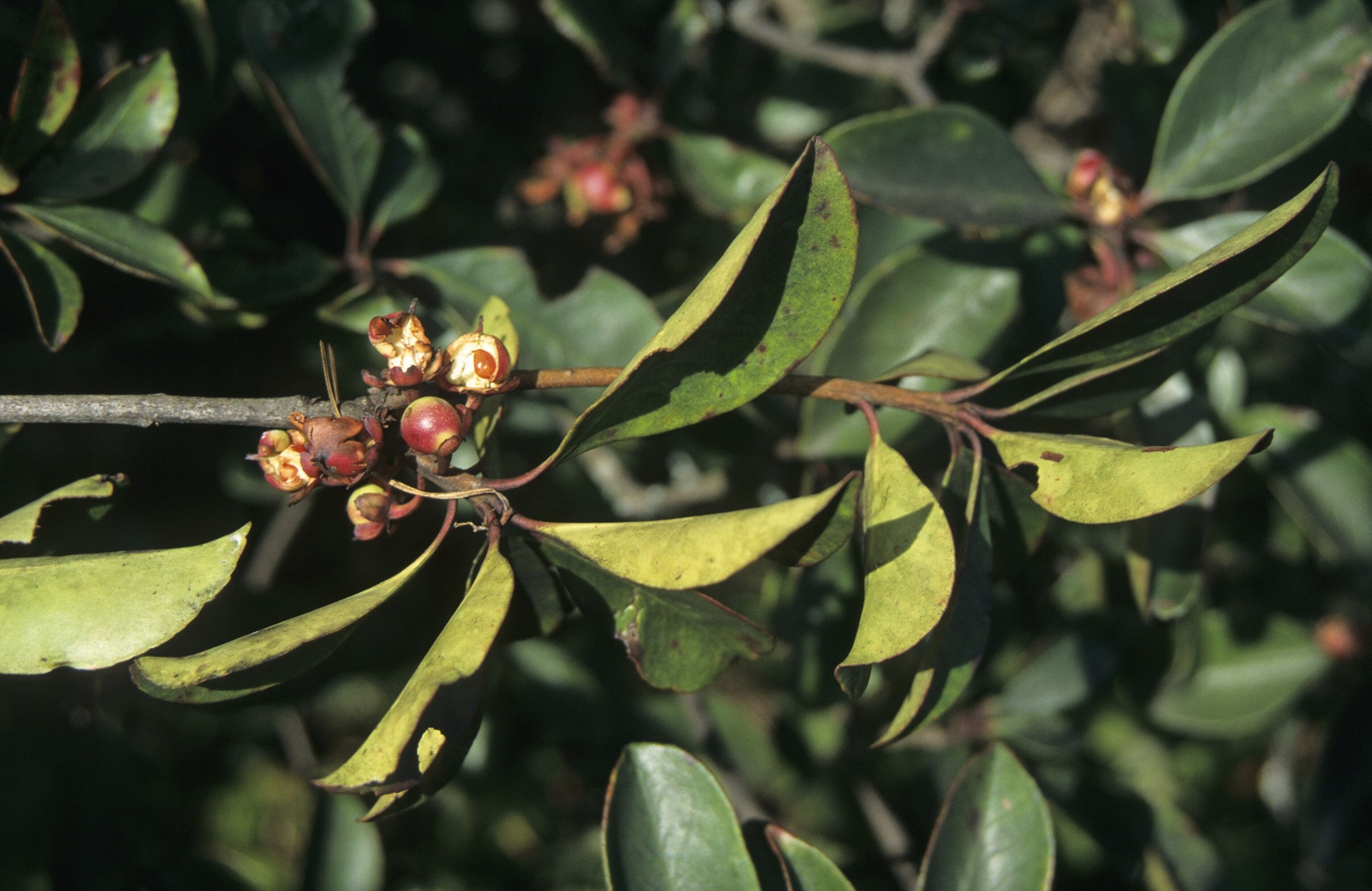Thunder god vine (Tripterygium wilfordii), a deciduous and largely poisonous climbing vine native to China, Taiwan, and Myanmar, may hold the secret to getting skinny, at least in mice.
A study published this past week in the journal Cell found that a compound called Celastrol, extracted from thunder god vine root, caused obese mice to spontaneously and voluntarily go on a diet. Celastrol-treated obese mice ate 80 percent less food than the control (non-treated) mice, and after three weeks of Celastrol treatment, the formerly fat mice had become positively svelte, shedding on average 45 percent of their body weight. The icing on the cake: Celastrol also decreased mouse cholesterol levels, improved liver function, and enhanced glucose metabolism.
As an anti-fat regimen, Celastrol was more effective than bariatric surgery, a procedure that reduces the size of the stomach, which in mice resulted in a 35 to 40 percent weight loss.
In people, bariatric surgery is an increasingly common treatment for severe obesity. About 200,000 people undergo it each year, most receiving a gastric bypass that reduces the stomach to the size of a hen’s egg and cuts off a portion of the small intestine, thus simultaneously restricting both food intake and food absorption.
In most cases, post-bypass, weight loss is rapid and dramatic. Patients lose on average 50 to 70 percent of their body weight. Additional benefits include reversal of Type II diabetes, lowered blood pressure and cholesterol level, decreased risk of heart disease, and, overall, up to a 50 percent reduction in risk of death.
There are drawbacks. It’s surgery, which is invasive and involves risks that, understandably, often make people nervous. It’s also expensive—the procedure alone costs somewhere between $17,000 and $25,000—and many health insurance plans refuse to cover it. Then those who do receive the surgery must commit quickly to a major change in lifestyle and eating habits—no more heaping plates of lasagna, for example—and even when successful, bariatric surgery isn’t a foolproof solution for achieving and maintaining weight loss. Some patients, after an initial post-surgical plummet, find themselves gaining their excess pounds back again.
Celastrol works by boosting the activity of leptin, an appetite-suppressing hormone that sends a stop signal to the brain when we’ve had enough to eat. Many researchers believe that the root cause of obesity may be an insensitivity to leptin—that is, we don’t perceive the signal telling us that we’re full, so we simply keep on eating (and eating). It’s not yet clear how we develop leptin insensitivity; neither do we know how to reverse it once it occurs. In fact, to date, we haven’t had much luck developing effective drugs targeting leptin.
In this sense, Celastrol looks hopeful–but scientists caution that just because the compound is effective in mice, doesn’t mean that it will impact humans in the same way. A running joke in the scientific community is that everything has been cured… in mice.
Mice, researchers point out, are often lousy models for human diseases and conditions. They may be great experimental animals, but the bottom line is that they’re not much like us.
In any case, in the meantime, don’t dash out to dredge up thunder god vine root on your own. Leaves, flowers, vines, and even the skin of the plant’s root are poisonous. An ominous Chinese folk nickname for thunder god vine is “Walk Seven Steps and Die.” It’s been touted in ancient Chinese medicine as a benefit to the immune system, but the science is still out on large-scale human trials.
So let’s wait for future results and keep our fingers crossed.





